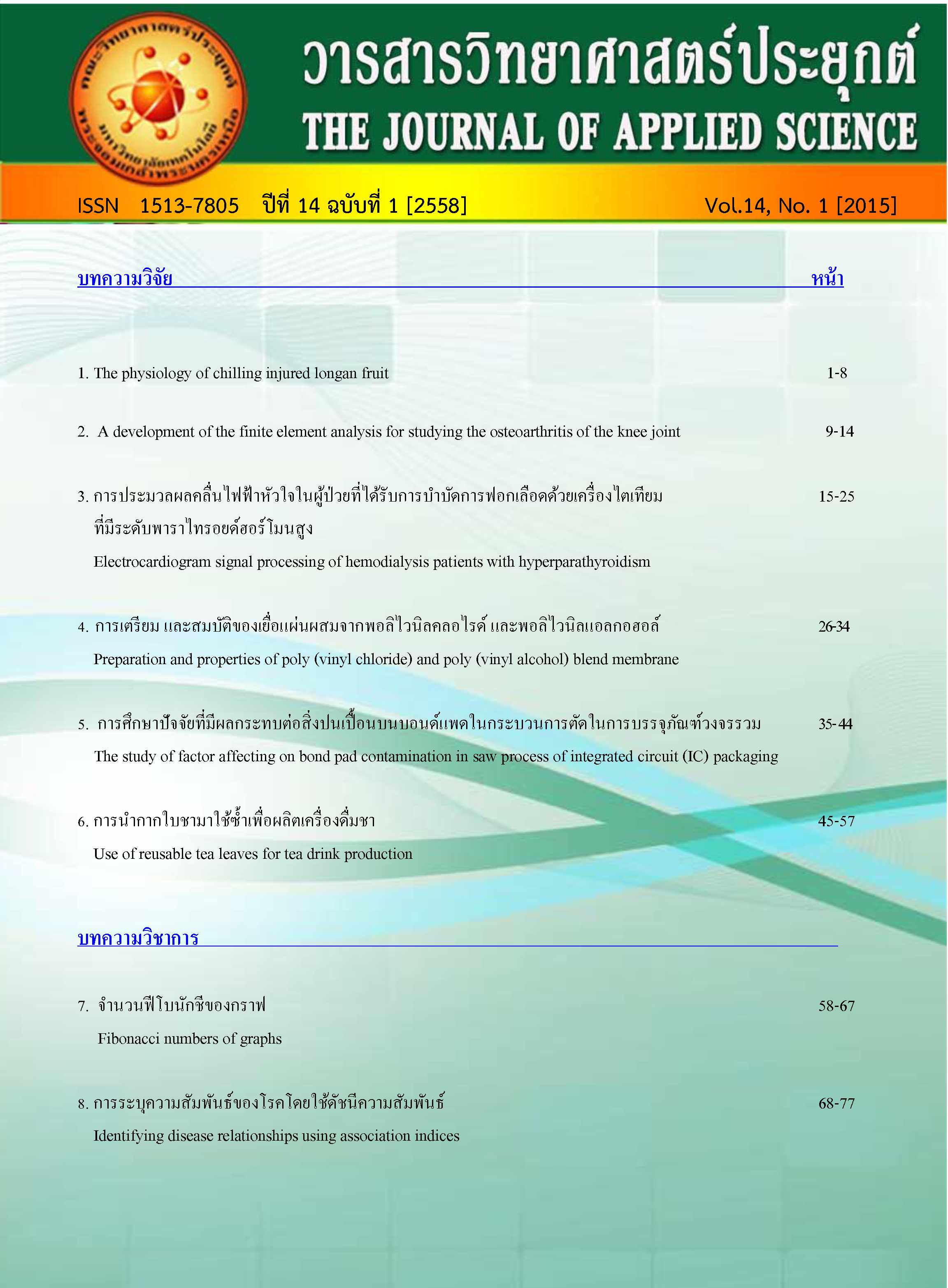Use of reusable tea leaves for tea drink production
Abstract
The objectives of this research were to compare qualities of tea formulas of B-1, B-2 and B-3 prepared from 100 % of the reusable tea leaves (wet weight) and fresh tea leaves at the ratio of 50, 60 and 70 % (dry weight). The formulas of C-1, C-2 and C-3 produced from the reusable tea leaves which extended the boiling time of 15, 30 and 45 min. The A formula used was a control prepared from 100% fresh tea leaves. Results showed that the qualities of color (L*, a* b*), soluble solids, caffeine, tannin, and phenolic compound of all B formulas differed from control (p<0.05), except for pH. The significant differences in physiochemical properties of all C formulas and control were obtained. These C formulas were not good enough for tea production due to their dilute qualities. The flavored tea with milk of formulas of B -1, B-2 and B-3 were made. The qualities still had lower in chemical and physical results than formula A. The production of tea by using reusable tea leaves (100%) and newly tea leaves at the concentration of 70% (B-3) had significantly different qualities by sensory evaluation, as compared to the control. Therefore, the uses of all reusable tea leaves without or with new tea leaves (50, 60 or 70%) are not suitable for production of tea or flavored milk tea.


